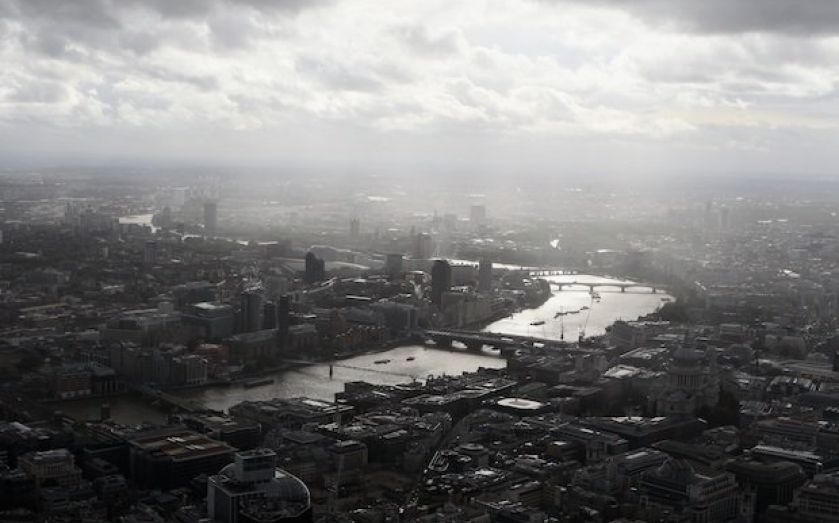Solve the capital’s hidden transport crisis by bridging the Thames Chasm

SOMETIMES a crisis doesn’t seem like a crisis because it is the status quo and people just take it for granted. For London, a case in point is the Thames Chasm – the acute shortage of road crossings of the River Thames east of Tower Bridge.
The inability to get across the East Thames is a critical obstacle to new jobs, housing and prosperity. This is not only true for East London, but for London and the south-east as a whole, as population pressure intensifies and the Thames Gateway – which extends 40 miles from central London to the Estuary – remains a development area which cannot be properly exploited. This Chasm also damages the national economy, as the M25 and other key trade routes are capacity constrained by a lack of East Thames crossings.
There are 16 road bridges going west for the 20 miles from Tower Bridge to Kew. But for the 20 miles east of Tower Bridge, there is only one road bridge (the Dartford Crossing of the M25) and two low capacity tunnels (the Victorian Blackwall tunnel and the Edwardian Rotherhithe Tunnel).
Apart from these and the odd ferry, there are no road traffic crossings between the East London boroughs of Tower Hamlets, Newham, and Barking and Dagenham on the north bank and Southwark, Greenwich, and Bexley on the south bank. And there is no connectivity whatsoever east of the Dartford Crossing between Grays and Tilbury on the Essex bank and Gravesend and Swanscombe on the Kent bank.
The existing East Thames crossings are three of the worst traffic bottlenecks in the country. The Dartford Crossing strains to carry 150,000 vehicles a day, far beyond its design capacity. The queues and congestion are such that the Highways Agency describes it as the least reliable section of the strategic road network nationwide.
As for the Blackwall Tunnel in East London, vehicles attempting to get through the tunnel in peak periods take an average of 19 minutes to crawl along the mile final approach. Opened in 1897 for carriages, the tunnel has dangerous height restrictions and bends – put in to stop the Victorian horses from bolting – which lead to accidents and closures virtually every day.
No one is gripping this crisis. The story is instead one of farcical prevarication. A new bridge between Newham and Greenwich at Thamesmead-Beckton was first seriously proposed in 1979, before being subjected to inquiry, redesigned, subjected to another inquiry, given the go-ahead in 1991, cancelled in 1993, re-proposed in 2002, subjected to a public inquiry in 2005, and then finally cancelled again in 2008 – for short-term political reasons – by the newly-elected mayor of London Boris Johnson. Instead, Boris erected his Emirates Air Line cable car, which carries fewer passengers in a day than the bridge would have carried every ten minutes.
As for a new crossing to supplement the Dartford Crossing – which was completed 23 years ago – this is the responsibility of central government. The previous government published options for this crossing in 2009. Last month, the current government finally published the responses to the consultation, but only went as far as ruling out one of the three options. So four years of consultation has still not led to any action.
Beyond the inefficiency and delays, this lack of connectivity seriously impedes housing and other investment. Barking Riverside is one of many major housing developments effectively stymied.
In my view, this chronic impasse is unlikely to be resolved until strategic responsibility for promoting and managing new and existing East Thames road crossings is given by the mayor and central government to one body – a Thames Crossings Development Corporation. This would operate on the model of the highly-effective Docklands Development Corporation, which over its 25 year life largely created today’s Canary Wharf.
The development corporation would have dedicated powers to promote new East Thames crossings, grant them planning consent, and build and manage projects, within a remit set jointly by the mayor and by ministers. Since the development corporation would be solely dedicated to promoting Thames crossings, it would not be inert or constantly distracted, as decision-makers have been for the last two decades.
The corporation would attract private finance, repaid through tolling the new crossings (with tolls regulated by government). In a time of fiscal constraint, this is the only way to ensure that new crossings are not delayed by the Treasury.
It is time for bold action to bridge the Thames Chasm. A development corporation dedicated to the task is the way forward.
Lord Adonis was transport secretary in the last government. This is an extract from Look East: A Plan for the Thames Gateway, published by Centre for London later this month.